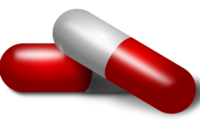A NIOSH Science Blog post
Medication-assisted treatment for opioid use disorder

The opioid overdose epidemic continues to claim lives across the country with a record 47,600 overdose deaths in 2017[i]. The crisis is taking an especially devastating toll on certain parts of the U.S. workforce. High rates of opioid overdose deaths have occurred in industries with high injury rates and physically demanding working conditions such as construction, mining, or fishing[ii],[iii]. Other job factors such as high job demands, job insecurity, and lack of control over tasks have also been linked to opioid use[iv]. Medication-assisted treatment* (MAT) has been effective for many people with opioid use disorder (OUD), allowing them to regain control of their OUD[v],[vi]. A new resource from NIOSH, “Workplace Solutions: Medication-Assisted Treatment for Opioid Use Disorder” provides general information about MAT and information for employers wishing to assist or support workers with OUD.
MAT uses medications approved by the U.S. Food and Drug Administration (FDA) in combination with counseling and behavioral therapies to treat OUD involving misuse of prescription and/or illicit opioids. The medications reduce the cravings for, and the euphoria (extreme pleasure) experienced from, opioids. They also lower the risk of the dangerous side effects of opioids [v]. Some medications may also reduce the risk of subsequent overdose. Three drugs commonly used in MAT are methadone, buprenorphine, and naltrexone. Descriptions of each drug and possible side effects are included in the MAT Workplace Solutions.
“Workplace Solutions: Medication-Assisted Treatment for Opioid Use Disorder” also covers common questions about the typical steps in medication-assisted treatment; whether drugs used as part of MAT can cause side effects that impair work activities; and how employees gain access to MAT. Regulations, rights and worker protections are also discussed.
The entire nation is struggling with the opioid epidemic. A 2017 National Safety Council survey found that 70% of employers reported suffering the negative effects of prescription drug misuse, noting positive drug tests, absenteeism, injuries, accidents, and overdoses[vii]. As we continue to develop effective solutions to the opioid epidemic, employers can take the following steps to contribute to the prevention and treatment of OUD.
- Ensure that work is safe and working conditions do not lead to worker injury or illness, or contribute to painful chronic conditions.
- Identify clinics that provide evidence based treatment for injured workers, including the adherence to opioid prescribing guidelines.
- Provide adequate leave and other benefits after workplace injury including flexibility in scheduling and receiving medical care, support during recovery, and return to work.
- Take steps to manage workplace stressors and job insecurity to the extent possible.
- Take steps to decrease the stigma associated with substance misuse through awareness building and supervisor training.
- Educate workers about how drugs impair work activities, including driving, and encourage them to notify their employers if they are taking medications that may affect their ability to work safely so that a safe solution can be determined.
- Develop and communicate clear drug-related workplace policies that include an offer of assistance to workers with OUD.
- Offer comprehensive treatment options to workers with OUD, including healthcare coverage that provides MAT.
- Work with health plan providers and pharmacy benefit managers to attend to inclusion of such coverage in employer health plans.
Please click here to visit the NIOSH Science Blog page and, in the comment section below the post, share how your workplace has been impacted by or dealt with the opioid epidemic.
* Note that some experts recommend the term “medication-based treatment” or MBT instead of MAT. This change in nomenclature aligns with the premise that OUD is chronic disorder for which medications are first-line treatments, often an integral part of a person’s long-term treatment plan, rather than complementary or temporary aids on the path to recovery [National Academies of Sciences, Engineering, and Medicine 2019].
References
[i] CDC [2018a]. Drug overdose deaths. Atlanta, GA: U.S. Department of Health and Human Services, Centers for Disease Control and Prevention, National Center for Injury Prevention and Control. https://www.cdc.gov/drugoverdose/data/statedeaths.html
[ii] Massachusetts Department of Public Health [2018]. Opioid-related overdose deaths in Massachusetts by industry and occupation, 2011‒2015. Boston, MA: Massachusetts Department of Public Health. https://www.mass.gov/files/documents/2018/08/15/opioid-industry-occupation.pdf
[iii] CDC [2018b] Occupational patterns in unintentional and undetermined drug-involved and opioid-involved overdose deaths―United States, 2007-2012. By Morano L, Steege A, Luckhaupt, S. Morbidity and Mortality Weekly Report (MMWR) 67(33):925–930. https://www.cdc.gov/mmwr/volumes/67/wr/mm6733a3.htm
[iv] Kowalski-McGraw M, Green-McKenzie J, Pandalai SP, Schulte PA [2017]. Characterizing the interrelationships of prescription opioid and benzodiazepine drugs with worker health and workplace hazards. J Occup Environ Med 59(11):1114-1126. doi: 10.1097/JOM.0000000000001154
[v] SAMHSA [2015b]. Medication and counseling treatment. Rockville, MD: U.S. Department of Health and Human Services, Substance Abuse and Mental Health Services Administration. https://www.samhsa.gov/medication-assisted-treatment/treatment
[vi] National Academies of Sciences, Engineering, and Medicine [2019]. Medication for opioid use disorder save lives. Leshner A, Mancer M, eds. http://nap.edu/25310 doi: 10.17226/25310
[vii] Hersman DA [2017]. How the prescription drug crisis is impacting American employers. Itasca, IL: National Safety Council. https://www.nsc.org/Portals/0/Documents/NewsDocuments/2017/Media-Briefing-National-Employer-Drug-Survey-Results.pdf
Looking for a reprint of this article?
From high-res PDFs to custom plaques, order your copy today!




